Although Sinclair’s figurines all resemble their giant sculpture counterparts to some degree, the Stegosaurus is perhaps the most strikingly close of them all, with more grace than typically seen in other artwork for the time.
Stegosaurus has been one of the most recognizable dinosaur genera since its discovery and description in 1877. Although a variety of its other spiky relatives have since been discovered, none have matched the ‘roofed lizard’ in terms of size and elaborate plate displays. No dinosaur collection feels complete without it and Sinclair Oil Company made sure to feature it among eight other dinosaurs as part of their Dinoland exhibit for the 1964-65 World’s Fair. A life-size fiberglass model of the dinosaur was produced for display, and at least a few pieces of Stegosaurus merchandise were produced for promotions alongside the other star dinosaurs. This review continues my coverage of six small figures Sinclair produced for sale as a set to promote Dinoland, and which continued to be sold at Sinclair gas stations in the following years. The Stegosaurus, of course, is our model of focus.
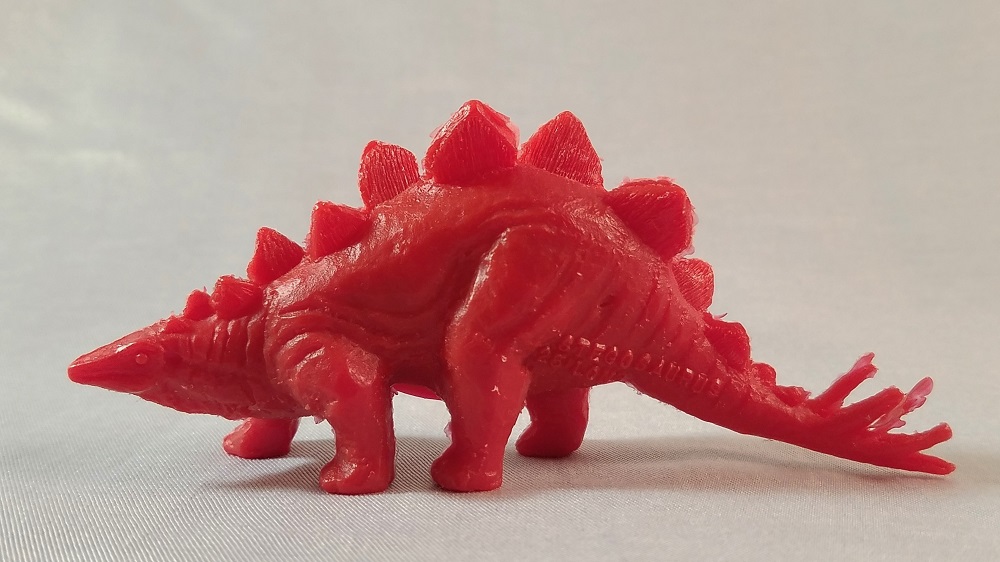

The Sinclair Stegosaurus measures a modest 9 cm (almost 3.75 inches) long, about the same size as the older Marx toy of the same genus. Sinclair figures are sometimes confused for the more famous Marx line, but when compared directly, the two Stego toys actually bear little to no resemblance to each other. The Sinclair one pays much more attention to anatomical proportions and naturalistic shape, making the Marx figure look markedly more “toyetic” in contrast. Granted, Sinclair’s figure had the advantage of nearly a decade for toy producers to refine the design process, so it’s probably a little unfair to compare the two – especially since the existence of the Marx figure and its set mates paved the way for the likes of Sinclair and other toy lines. All the same, it’s fascinating to compare these two pieces of dino pop culture history side by side.
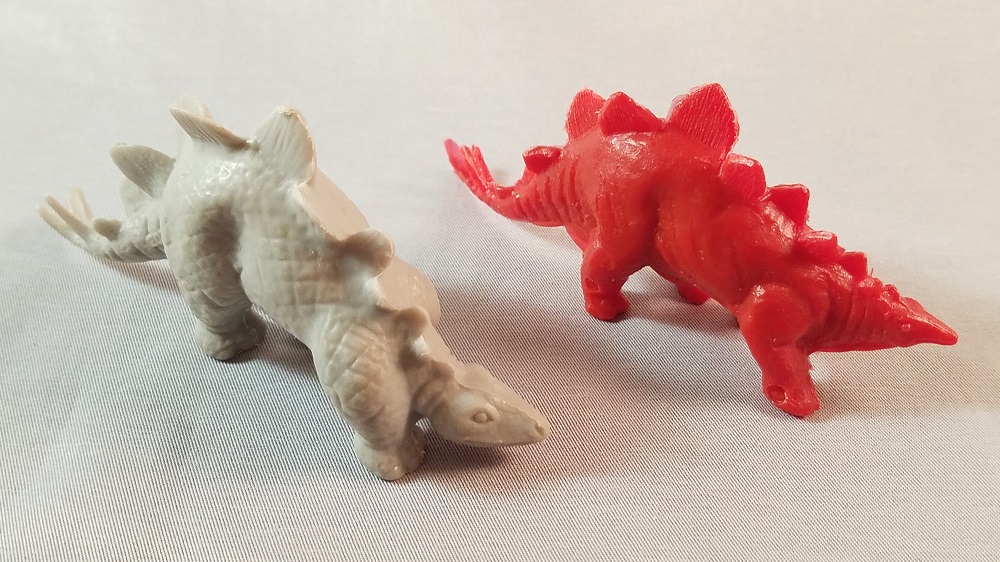
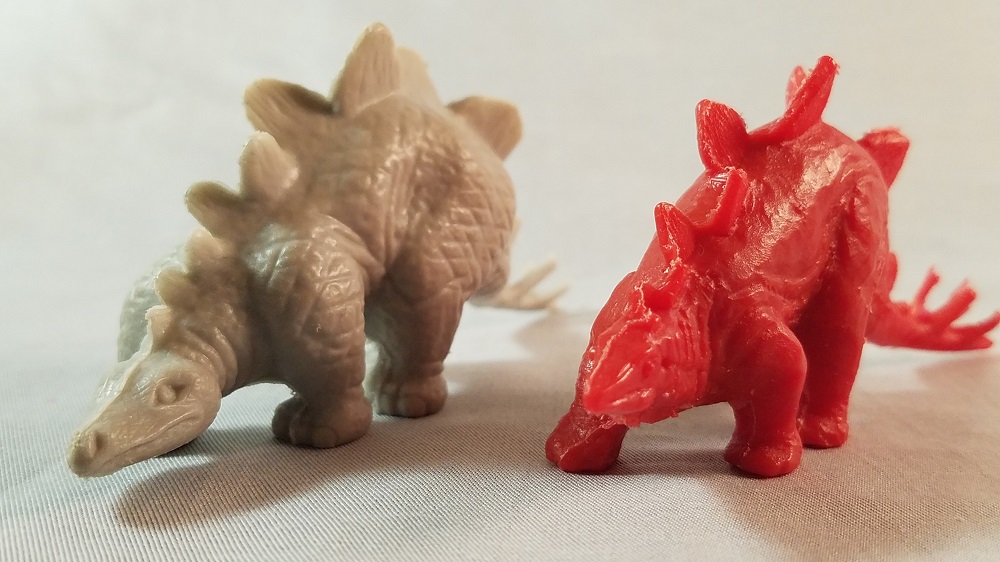
Sinclair’s Stegosaurus figure is sculpted in the likeness of the fiberglass statue of the genus displayed in the Dinoland exhibit. Wildlife sculptor L. Paul Jonas was hired by Sinclair to build the statues, which he designed by referencing the artwork of Charles R. Knight, with additional input from paleontologists. Although the six dinosaur models all resemble their giant sculpture counterparts to some degree, the Stegosaurus is perhaps the most strikingly close of them all. The little plastic toy is nearly identical to Jonas’s statue in its posture and detail, depicted in a slow walking gait with its head up (relatively speaking) and tail hovering just above the ground. Although dinosaurs were still being depicted as slow and sluggish failures of life during the mid-60s, Sinclair’s designs carry a little more grace to them than seen in other artwork for the time. A lot of vintage Stegosaurus art tended toward depicting the animal’s body arched dramatically, with the head pointing at the ground. The choice to mold this figure with its head aimed straight and forward does a lot to make it look more alert and alive.

Other notable details of this figure include fine grooving on each dorsal plate, on both sides. Two neat round eyes pop out of the head, with striations across the neck, haunches, and base of the tail to represent flexed skin and muscle. Large folds of reptilian skin are sculpted along the contours of the stocky body. Not much detail is granted to the feet, but there is an ever-so-slight presence of toes. Surprisingly, the animal’s signature tail spikes suffer a little as well – although in this case it’s more of a fragility issue. My Stegos have fairly narrow spikes, and it seems at least one spike may have had recurring faults in molding, for it is so fragile that it risks breaking off like excess plastic. Other residual details from the molding process include smooth ridges along the belly and underside of the tail, seams running along the legs and feet as well as along the back between the dorsal plates, and the usual indented circles located on the right side of each foot.
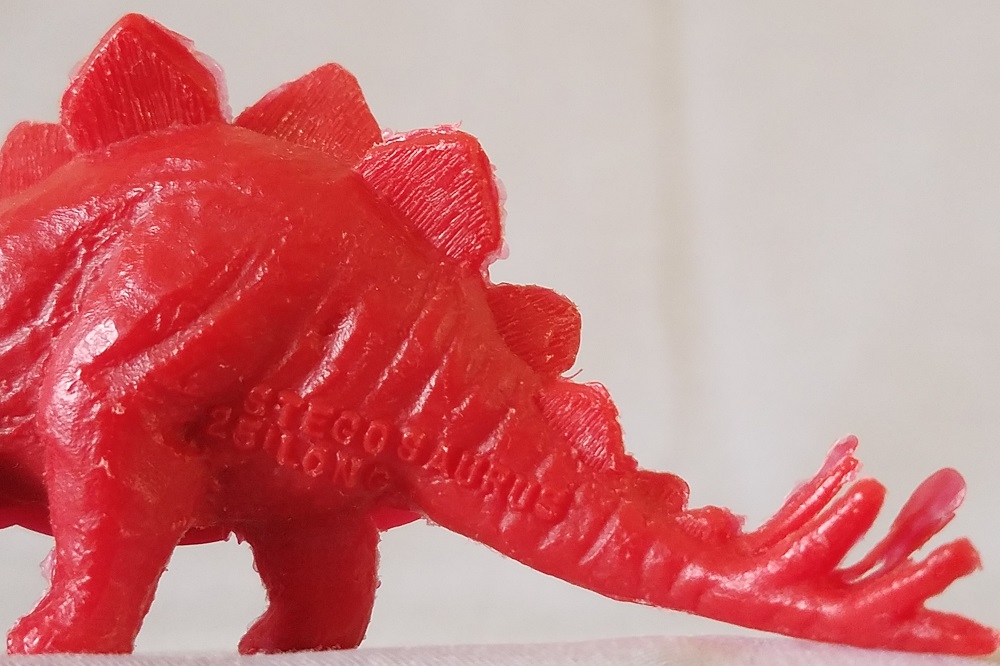
Like the other Sinclair figures, as well as other toy lines including Marx and MPC, the Stegosaurus is engraved with its genus and estimated real-life size (listed as 25 feet long); however, Sinclair did not include their own company name in the markings. Sinclair’s molds would be repurposed decades later by a company named Dimensions for Children, so differentiating originals from recasts can be a challenge sometimes. It’s believed Sinclair typically molded their Stegosaurus in red, yellow, or brown, whereas DFC recasts came in a wider, more vibrant range of colors, with changes to the positions of the mold marks and engravings. There are currently two Stegos in my own collection, one red and one yellow. As far as I can tell, both of them are Sinclair originals based on the markings (engravings on the left of the tail, mold circles on the right of the feet) as well as the grade of plastic (DFCs are often shinier and harder).
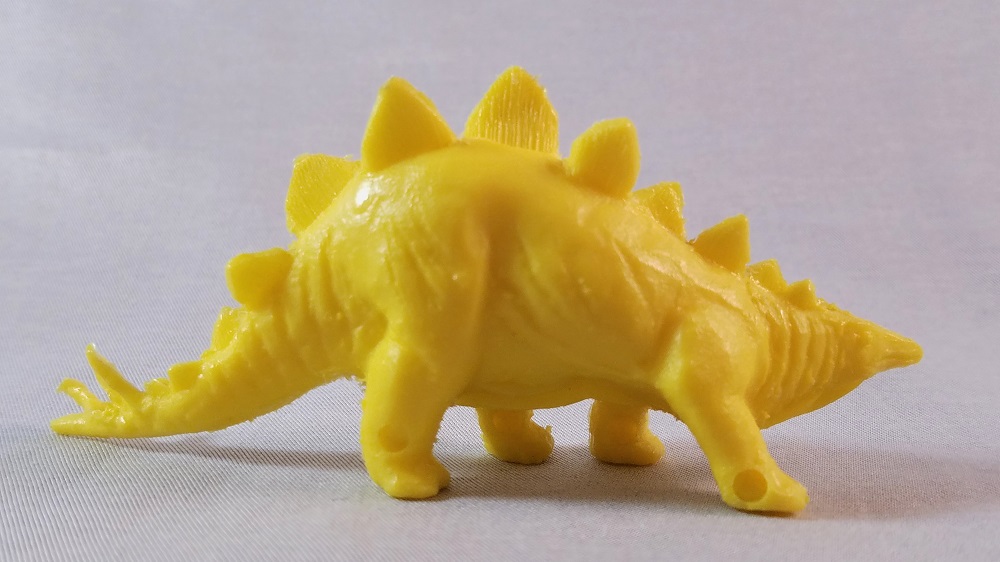

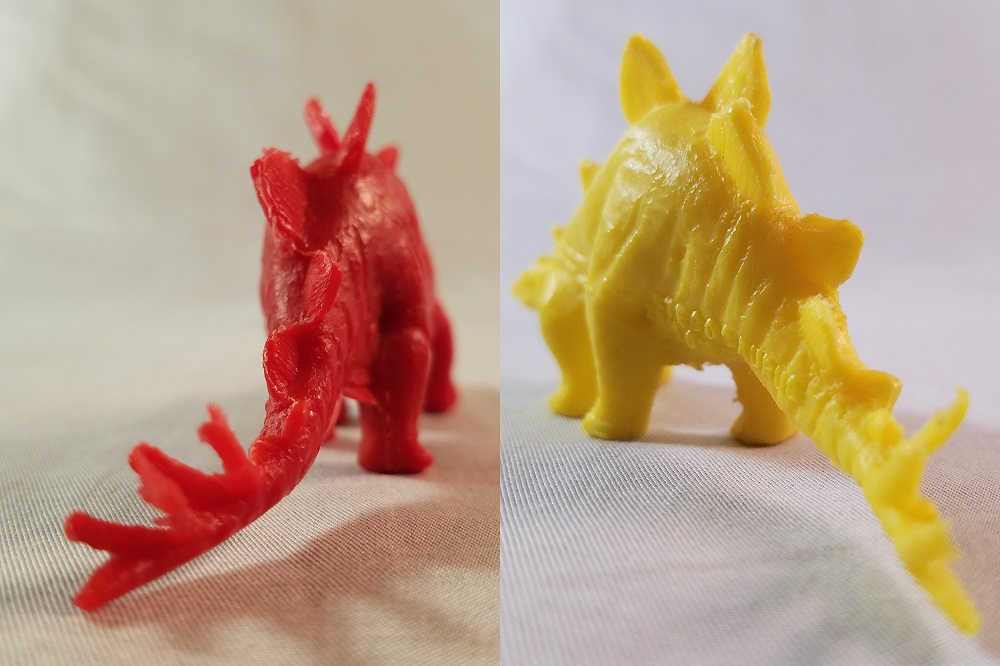
Less than a year ago, I had never heard of Sinclair’s Dinoland exhibit, and had no knowledge of the merchandise produced for its promotion – even though I had grown up playing with three of the very figures produced decades ago. Exploring the history of vintage dinosaur toys has been a new delight thanks to this Stegosaurus and its counterparts, and this is only a part of the Sinclair set I’ve covered so far. Similarly-enticed collectors should keep their eyes peeled for listings on sites like eBay or eCrater; they don’t show up consistently, but can pop up amidst other vintage toys individually or in larger lots.
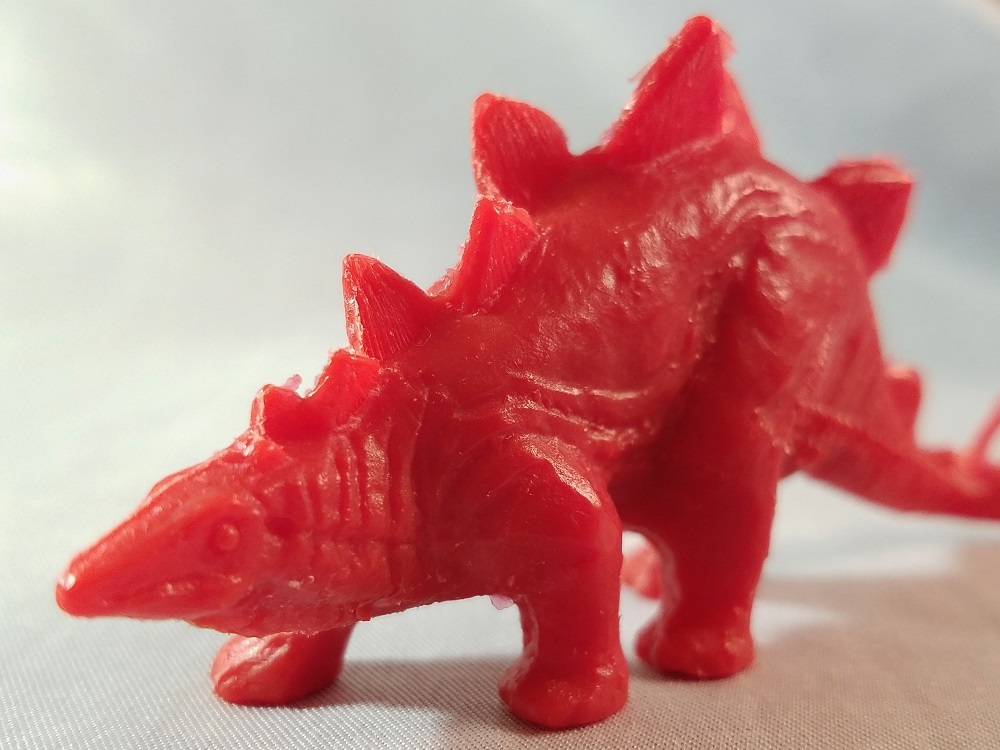
Support the Dinosaur Toy Blog by making dino-purchases through these links to Ebay and Amazon. Disclaimer: links to Ebay.com and Amazon.com on the The Dinosaur Toy Blog are often affiliate links, when you make purchases through these links we may make a commission

Hello,
I love this article & it’s pretty accurate- save for one glaring error. You state that the Sinclair mold was used to create the DFC dinos of the 80s- not quite true. In 1969, The American Museum of Natural History (NYC) either altered the original molds or made an entirely new mold to create a set of 6 bronze marbled plastic dinosaurs for the centennial (1969/70). They are extremely rare, so one can see how most wouldn’t know, the easiest way you can see the the DFCs are from this set is besides the removal of some names & fine details- the T rex now HAS TEETH (the original original Sinclair T rex had an open mouth but no teeth) as did the AMNH Rex. Just thought I’d let you know.
I live in Atlanta, and our Fernbank Museums carry copies of the Struthiomimus and Stegosaurus!
This is one of my favorite Sinclair models. Glad you’re reviewing the set as they are an important historical part of the whole Dino figure evolution through the years.
This is more like it, much better than the Ankylosaurus. I agree that this one is also superior to the Marx Stegosaurus but I was never a big fan of that one anyway. This one gives me Invicta vibes too, and the Invicta Stegosaurus is my personal favorite of the vintage Stegosaurus toys.